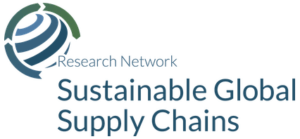Automation versus relocation in clothing global value chains: Will investments shift from China to Africa at a big scale?
Lindsay Whitfield and Tilman Altenburg
Apr, 2024
#Trade and FDI
#Manufacturing
#Sub-saharan Africa
#East Asia and Pacific
#Social and working conditions
#Energy
Since the beginning of this century, China has emerged as the workbench for the world’s clothing industry, increasing its share in global exports from 18% at the turn of the century to about 40% in 2015 (Lu 2016). This had important implications for poor countries, as participation in global clothing value chains historically had been an accelerator of industrialization and poverty reduction (Whitfield, Marslev & Staritz 2021). In the last 50 years, especially a number of Asian countries had first accumulated manufacturing capabilities in the textile and clothing industries and then diversified towards more sophisticated industries. China’s unprecedented domination of the world market, however, closed this option for many countries. Other clothing exporting countries found it increasingly difficult to compete with China’s unique combination of a huge low-cost labour force plus enormous economies of scale and scope of the world’s largest industry clusters. This is now changing. In the last 15 years, industry wages in China have risen steeply, thereby eroding China’s competitiveness in labour-intensive manufacturing.
Does this enormous shift provide new opportunities for sub-Saharan African countries? Can they attract these industries and fill the space vacated by China?
To assess these questions, we need to understand the rationale of clothing manufacturers in China. There are two options: to relocate production abroad – or to automate at home. The Chinese government supports both. In 2012, it adopted The Twelfth Textile Industry Development Plan, which officially called for a “going-out strategy” for this sector and encouraged the leading firms to build up overseas operations. At the same time, factory automation is one of the most prominent objectives of its “Made in China 2025” strategic plan.
And both trends are indeed strong. In terms of relocation, since labour cost competitiveness started to erode, Chinese textile and clothing firms’ foreign investments have soared.
To assess these questions, we need to understand the rationale of clothing manufacturers in China. There are two options: to relocate production abroad – or to automate at home. The Chinese government supports both. In 2012, it adopted The Twelfth Textile Industry Development Plan, which officially called for a “going-out strategy” for this sector and encouraged the leading firms to build up overseas operations. At the same time, factory automation is one of the most prominent objectives of its “Made in China 2025” strategic plan.
And both trends are indeed strong. In terms of relocation, since labour cost competitiveness started to erode, Chinese textile and clothing firms’ foreign investments have soared.
This is reflected in China’s market share in global clothing exports, which fell to 30.8% in 2019 (Statista 2020). Chen and Li (2019) estimate that about 25-35 percent of clothing manufacturing in terms of value of exports has shifted from China to Southeast and South Asian countries, mainly Cambodia, Vietnam, Myanmar and Bangladesh. Only a tiny fraction of these investments went into sub-Saharan Africa, with a certain peak in 2015-2017, but tapering off in the following years. The largest recipients were Egypt and Ethiopia. Wages in most African countries are relatively high compared to Asian competitor countries, and where they are low, as in Ethiopia, low productivity raises unit labour costs; and even more importantly, many Asian countries offer more attractive investment conditions in terms of political stability, skilled labour, proximity to related industries as well as reliable transport and energy infrastructure (Altenburg et al. 2020).
With regard to factory automation, Chinese firms also undertake big efforts to mitigate rising labour costs. Many types of clothing production are already largely automated, including knitwear and simple products such as T-Shirts and underwear. The sewing operations for complex products such as shirts and suits, however, are difficult to robotise, as the limpness of the fabric requires constant manual pulling and slipping to bring the material into the right position for the sewing machine. Firms around the world are experimenting with a number of automation techniques (Nayak & Padhye 2018). Most of them are applying multiple sensors to allow for robotic vision sewing, and some use chemicals to stiffen the fabric (Altenburg et al 2020, 11ff.). While it is technically feasible to make sewing robots (“sewbots”) produce even complex clothing products, manual production is still far more cost-effective and faster. In 2017, only 443 sewbots were sold globally – 300 times less than to the automotive industries (International Federation of Robotics, cited in Altenburg et al. 2020). Yet many auxiliary activities have been widely automated, such as all upstream activities (design, production of yarn and textiles), the spreading, cutting and ironing of fabrics as well as packaging and sales. Interestingly, China accounted for 64% of the incipient global sewbot market (ibid.).
Chinese firms are willing to incur the costs of factory automation, as the advantages of agglomeration in home-grown industrial clusters act as a strong deterrent to relocation. In 2017, the Center for New Structural Economics in Beijing and the Overseas Development Institute in London conducted a survey among export-oriented light manufacturing firms in China (Xu et al., 2017). Among the apparel firms surveyed, only 6% said that their first response was to transfer to a new location, whether inside or outside of China, and only 10% said that it was within their top three strategies. Only very few firms considered moving to sub-Saharan Africa, which for many companies remains uncharted territory compared to neighbouring Asian low-wage locations. Of the 640 surveyed firms, only three had established production bases in Africa, all in Ethiopia, and all in footwear.
What, then, are the prospects for Africa? While there are no signs of a major relocation of firms from China to this region, given the size of the clothing industry in China capturing even a small percentage of relocating firms or redirected contracts could make a big difference for some African countries. Only a few countries in the region are potentially competitive with Asian competitors in terms of labour costs – above all Ethiopia. In addition, the Ethiopian government adopted a foreign direct investment strategy that prioritized building strong relations with large global clothing retailers and brand marketers that in turn encouraged some of their core suppliers in Asian countries to set up factories in Ethiopia. This government strategy worked because the Western retailers and brand marketers that responded, such as H&M and PVH, already had a business strategy of shifting part of their sourcing from Asia to Africa and were looking for a new sourcing location on the sub-continent. Ethiopia, with its receptive government, became that new location. In particular, PVH worked with the Ethiopian government to design an eco-friendly industrial park in Hawassa where fabric production, accessory producers and assembly firms could co-locate to capture the benefits from agglomeration and economies of scale. The industrial park also included zero-liquid discharge facilities to treat water waste, especially from fabric production. The Ethiopian government then created several other industrial parks across the country. While other global clothing buyers have not become as invested as PVH in Ethiopia as a new sourcing location, they do seek to benefit by sourcing from the foreign firms that have set up in the industrial parks. The Ethiopian government also invested in infrastructure to link the parks to ports and airports, and worked closely with these global buyers and transnational suppliers from the investment through the exporting stages to address challenges and bottlenecks (Whitfield, Staritz & Morris 2020).
Among the foreign clothing and textile firms attracted to Ethiopia by the government’s industrial policies, Chinese firms constitute the largest group (see Table 1). In particular, Chinese firms dominate foreign direct investments in yarn spinning and fabric production for export or indirect export (selling to exporting clothing firms), which has been a key part of the government’s policy to increase value addition in Ethiopia. These Chinese firms include major providers of woven, wool and linen fabric producers for retailers and branded merchandisers such as PVH and H&M.
With regard to factory automation, Chinese firms also undertake big efforts to mitigate rising labour costs. Many types of clothing production are already largely automated, including knitwear and simple products such as T-Shirts and underwear. The sewing operations for complex products such as shirts and suits, however, are difficult to robotise, as the limpness of the fabric requires constant manual pulling and slipping to bring the material into the right position for the sewing machine. Firms around the world are experimenting with a number of automation techniques (Nayak & Padhye 2018). Most of them are applying multiple sensors to allow for robotic vision sewing, and some use chemicals to stiffen the fabric (Altenburg et al 2020, 11ff.). While it is technically feasible to make sewing robots (“sewbots”) produce even complex clothing products, manual production is still far more cost-effective and faster. In 2017, only 443 sewbots were sold globally – 300 times less than to the automotive industries (International Federation of Robotics, cited in Altenburg et al. 2020). Yet many auxiliary activities have been widely automated, such as all upstream activities (design, production of yarn and textiles), the spreading, cutting and ironing of fabrics as well as packaging and sales. Interestingly, China accounted for 64% of the incipient global sewbot market (ibid.).
Chinese firms are willing to incur the costs of factory automation, as the advantages of agglomeration in home-grown industrial clusters act as a strong deterrent to relocation. In 2017, the Center for New Structural Economics in Beijing and the Overseas Development Institute in London conducted a survey among export-oriented light manufacturing firms in China (Xu et al., 2017). Among the apparel firms surveyed, only 6% said that their first response was to transfer to a new location, whether inside or outside of China, and only 10% said that it was within their top three strategies. Only very few firms considered moving to sub-Saharan Africa, which for many companies remains uncharted territory compared to neighbouring Asian low-wage locations. Of the 640 surveyed firms, only three had established production bases in Africa, all in Ethiopia, and all in footwear.
What, then, are the prospects for Africa? While there are no signs of a major relocation of firms from China to this region, given the size of the clothing industry in China capturing even a small percentage of relocating firms or redirected contracts could make a big difference for some African countries. Only a few countries in the region are potentially competitive with Asian competitors in terms of labour costs – above all Ethiopia. In addition, the Ethiopian government adopted a foreign direct investment strategy that prioritized building strong relations with large global clothing retailers and brand marketers that in turn encouraged some of their core suppliers in Asian countries to set up factories in Ethiopia. This government strategy worked because the Western retailers and brand marketers that responded, such as H&M and PVH, already had a business strategy of shifting part of their sourcing from Asia to Africa and were looking for a new sourcing location on the sub-continent. Ethiopia, with its receptive government, became that new location. In particular, PVH worked with the Ethiopian government to design an eco-friendly industrial park in Hawassa where fabric production, accessory producers and assembly firms could co-locate to capture the benefits from agglomeration and economies of scale. The industrial park also included zero-liquid discharge facilities to treat water waste, especially from fabric production. The Ethiopian government then created several other industrial parks across the country. While other global clothing buyers have not become as invested as PVH in Ethiopia as a new sourcing location, they do seek to benefit by sourcing from the foreign firms that have set up in the industrial parks. The Ethiopian government also invested in infrastructure to link the parks to ports and airports, and worked closely with these global buyers and transnational suppliers from the investment through the exporting stages to address challenges and bottlenecks (Whitfield, Staritz & Morris 2020).
Among the foreign clothing and textile firms attracted to Ethiopia by the government’s industrial policies, Chinese firms constitute the largest group (see Table 1). In particular, Chinese firms dominate foreign direct investments in yarn spinning and fabric production for export or indirect export (selling to exporting clothing firms), which has been a key part of the government’s policy to increase value addition in Ethiopia. These Chinese firms include major providers of woven, wool and linen fabric producers for retailers and branded merchandisers such as PVH and H&M.
Challenging conditions need to be met in Ethiopia and other African countries in order to succeed. Political stability and other factors eroding investors’ confidence arguably are the biggest hindrance. Moreover, interested countries need efficient transport infrastructure and customs, a pool of workers that can be trained quickly in order to increase productivity, and stable energy supplies for the development of textile production.
Interviews with leading researchers and entrepreneurs in the field of clothing automation suggest that manual assembly is expected to remain cost-competitive for (only) about 15-20 years (Altenburg et al 2020) before automation will make it redundant. This offers African countries a temporary opportunity to build the respective infrastructure and attract investments from international clothing firms, yet it also suggest that such investments can only be maintained if African countries use this window of opportunity to move up in the global textile and clothing value chain. This, in turn, will require more specific industrial policies to develop high-quality skills and infrastructure to woo investors into higher-value functions and segments of the clothing industry. It also requires reducing lead times to compete in short-cycle fashion markets, and to strengthen the role of local firms, inter-firm linkages and domestic supply (Whitfield, Staritz & Morris 2020). Ethiopia is taking steps in this direction, which may pay off if political stability is restored.
Interviews with leading researchers and entrepreneurs in the field of clothing automation suggest that manual assembly is expected to remain cost-competitive for (only) about 15-20 years (Altenburg et al 2020) before automation will make it redundant. This offers African countries a temporary opportunity to build the respective infrastructure and attract investments from international clothing firms, yet it also suggest that such investments can only be maintained if African countries use this window of opportunity to move up in the global textile and clothing value chain. This, in turn, will require more specific industrial policies to develop high-quality skills and infrastructure to woo investors into higher-value functions and segments of the clothing industry. It also requires reducing lead times to compete in short-cycle fashion markets, and to strengthen the role of local firms, inter-firm linkages and domestic supply (Whitfield, Staritz & Morris 2020). Ethiopia is taking steps in this direction, which may pay off if political stability is restored.
References
Altenburg, T., Chen, X., Lütkenhorst, W., Staritz, C., & Whitfield, L. (2020). Exporting out of China or out of Africa? Automation versus relocation in the global clothing industry. DIE Discussion Paper 1/2020. Bonn: German Development Institute.
Chen, W., & Li, J. (2019). Estimating the scale of relocation of labor-intensive manufacturing from China: Facts and potentials (NSE Discussion Paper Series). Beijing: Peking University, Institute of New Structural Economics (INSE).
Lu, S. (2016). WTO Reports: World Textile and Apparel Trade in 2015. https://shenglufashion.com/2016/07/27/wto-reports-world-textile-and-apparel-trade-in-2015/
Nayak, R., & Padhye R. (Eds. 2018), Automation in garment manufacturing. Amsterdam: Woodhead Publishing.
Statista (2020). Share in world exports of the leading clothing exporters in 2019, by country. https://www.statista.com/statistics/1094515/share-of-the-leading-global-textile-clothing-by-country/
Whitfield, L., Staritz, C., & Morris, M. (2020). Global value chains, industrial policy and economic upgrading in Ethiopia’s apparel Sector. Development and Change 51(4), 1018-1043.
Whitfield, L., Marslev, K., & Staritz, C. (2021). Can apparel export industries catalyse industrialisation? Combining GVC participation and localisation. SARChI Industrial Development Working Paper Series WP 2021-01. SARChI Industrial Development, University of Johannesburg.
WTO. (2020). World trade statistical review 2019. Geneva: World Trade Organization.
Xu, J., Gelb, S., Li, J., & Zhao, Z. (2017). Adjusting to rising costs in Chinese light manufacturing. What opportunities for developing countries? London: Overseas Development Institute (ODI), Supporting Economic Transformation (SET) Programme.
Altenburg, T., Chen, X., Lütkenhorst, W., Staritz, C., & Whitfield, L. (2020). Exporting out of China or out of Africa? Automation versus relocation in the global clothing industry. DIE Discussion Paper 1/2020. Bonn: German Development Institute.
Chen, W., & Li, J. (2019). Estimating the scale of relocation of labor-intensive manufacturing from China: Facts and potentials (NSE Discussion Paper Series). Beijing: Peking University, Institute of New Structural Economics (INSE).
Lu, S. (2016). WTO Reports: World Textile and Apparel Trade in 2015. https://shenglufashion.com/2016/07/27/wto-reports-world-textile-and-apparel-trade-in-2015/
Nayak, R., & Padhye R. (Eds. 2018), Automation in garment manufacturing. Amsterdam: Woodhead Publishing.
Statista (2020). Share in world exports of the leading clothing exporters in 2019, by country. https://www.statista.com/statistics/1094515/share-of-the-leading-global-textile-clothing-by-country/
Whitfield, L., Staritz, C., & Morris, M. (2020). Global value chains, industrial policy and economic upgrading in Ethiopia’s apparel Sector. Development and Change 51(4), 1018-1043.
Whitfield, L., Marslev, K., & Staritz, C. (2021). Can apparel export industries catalyse industrialisation? Combining GVC participation and localisation. SARChI Industrial Development Working Paper Series WP 2021-01. SARChI Industrial Development, University of Johannesburg.
WTO. (2020). World trade statistical review 2019. Geneva: World Trade Organization.
Xu, J., Gelb, S., Li, J., & Zhao, Z. (2017). Adjusting to rising costs in Chinese light manufacturing. What opportunities for developing countries? London: Overseas Development Institute (ODI), Supporting Economic Transformation (SET) Programme.


